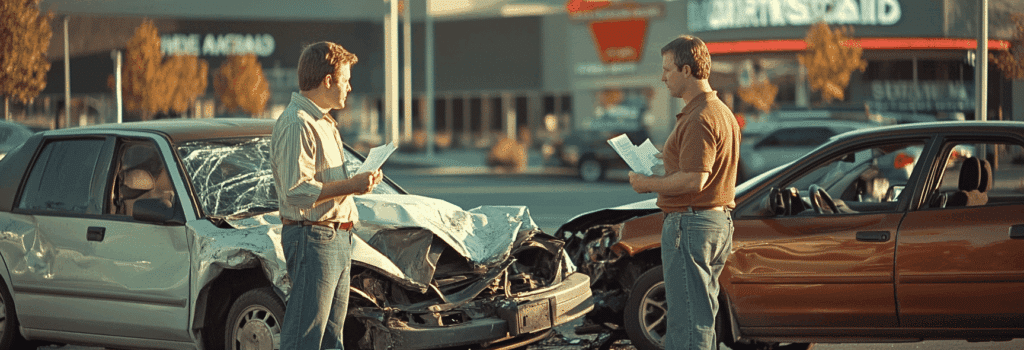CT Uninsured Motorist Coverage: Your Authoritative Guide
Last updated Thursday, April 24th, 2025

CT uninsured motorist coverage is a mandatory type of insurance designed to protect you from the financial consequences of accidents with uninsured drivers. This coverage ensures you won’t bear the full burden of medical bills and vehicle repairs if the other driver lacks insurance. In this article, we’ll explore what uninsured motorist coverage includes, how it works in Connecticut, and why it’s essential.
Key Takeaways
- Uninsured motorist coverage is mandatory in Connecticut, providing financial protection for bodily injury and property damage when involved with uninsured drivers or in hit-and-run incidents.
- Connecticut law requires a minimum of $25,000 per person and $50,000 per accident in uninsured motorist coverage, essential for protecting against significant out-of-pocket expenses.
- Understanding the differences between uninsured and underinsured motorist coverage, as well as opting for appropriate policy limits, can provide drivers additional security and financial peace of mind.

Get Your FREE Case Review,
In Person or Virtually Online
What is Uninsured Motorist Coverage?
Uninsured motorist coverage is a mandatory insurance in Connecticut designed to protect you and your passengers from the financial fallout of accidents involving drivers who either have no insurance or insufficient coverage. This critical coverage includes both bodily injury and property damage protection, ensuring that medical bills and car repairs are covered even when the other driver lacks insurance.
Imagine the frustration of being involved in an accident, only to find out the other driver is not insured. Without uninsured motorist coverage, you could face overwhelming financial liabilities, from hospital bills to vehicle repairs. This coverage steps in to pay for these expenses, preventing significant out-of-pocket costs and offering peace of mind in stressful situations.
Uninsured motorist coverage also extends to passengers in your vehicle, ensuring they are protected as well. Additionally, it provides financial support in hit-and-run incidents, where the responsible driver is unknown or flees the scene. Thus, this coverage not only safeguards you but also your family member and loved ones, making it an indispensable part of your auto insurance policy.
How Does Uninsured Motorist Coverage Work in Connecticut?

When you file a claim under uninsured motorist coverage, it is crucial to report the motor vehicle accident to your insurance company promptly. Your insurance company will then investigate the uninsured motorist claim, determining liability based on whether the other driver was negligent and if you had any role in the accident. This thorough investigation helps ensure that the right party is held responsible and that you receive the compensation you deserve.
The process may seem daunting, but understanding your policy and the steps involved can make it much smoother. Being familiar with the terms of your policy and the coverage limits as a policy holder can help you navigate the claims process more effectively and ensure you get the protection you are entitled to.
The Importance of Carrying Uninsured Motorist Coverage
Uninsured motorist coverage is essential because it shields you from the financial repercussions of accidents caused by drivers who either don’t carry auto insurance or have insufficient coverage. Imagine the high medical costs and lost wages that can follow a serious accident. Without adequate coverage, these expenses could become a significant burden.
Many drivers mistakenly believe that their regular premiums provide complete protection against all accident-related costs. However, without uninsured motorist coverage, you might find yourself facing unexpected financial challenges. This coverage acts as a financial buffer, preventing substantial out-of-pocket expenses and ensuring that you and your passengers are adequately protected by driver’s insurance.
Carrying adequate uninsured motorist coverage is not just about complying with legal requirements; it’s about safeguarding your financial future. Having enough insurance helps you avoid the devastating consequences of accidents with uninsured drivers, giving you peace of mind every time you drive.

Get Your FREE Case Review,
In Person or Virtually Online
Differences Between Uninsured and Underinsured Motorist Coverage
Understanding the difference between uninsured and underinsured motorist coverage is crucial for comprehensive protection. Uninsured motorist coverage applies when the at-fault driver has no insurance, while underinsured motorist coverage kicks in when the at-fault driver’s insurance is insufficient to cover the damages. This is especially important for those concerned about uninsured and underinsured motorist situations.
Underinsured motorist coverage activates after the negligent driver’s insurance pays out its limits. It then covers the gap between those limits and the actual damages incurred. This type of underinsured coverage is particularly important in severe accidents where medical expenses and damages exceed the at-fault driver’s policy limits, especially when there is limited coverage.
In some states, uninsured and underinsured motorist coverages can be bundled into a single policy option, simplifying standard coverage options for drivers. This bundling can make it easier to manage your insurance coverage and ensure you are fully protected against both uninsured and underinsured motorists.
Understanding Underinsured Motorist Conversion Coverage
Underinsured motorist conversion coverage is an enhanced form of protection that combines your coverage with the at-fault driver’s liability, allowing you to recover full damages rather than being limited to your own policy’s cap. This type of coverage is generally more favorable to policyholders compared to standard underinsured motorist coverage.
Conversion coverage provides additional coverage protection beyond the responsible party’s insurance, ensuring that you are fully compensated for your losses. For instance, if the at-fault driver’s insurance is insufficient to cover all your medical expenses and damages, underinsured motorist conversion coverage steps in to cover the remaining costs. In such cases, coverage pays for the additional expenses incurred.
This coverage can be particularly beneficial in serious accidents, where the damages far exceed the other driver’s insurance limits. By combining the at-fault driver’s liability coverage with your own collision coverage, you can ensure that you receive adequate compensation for your injuries and damages, providing you with financial peace of mind.
Steps to Take After an Accident with an Uninsured Driver
Being involved in a car accident with an uninsured driver can be a stressful experience. The first step is to exchange information, such as names, contact details, and insurance information, and to file a police report. This report will serve as an official record of the incident and is crucial for any subsequent claims process.
Gathering evidence at the scene, such as photos and witness information, can significantly support your claim when dealing with an uninsured driver. These details can help your insurance company assess the situation more accurately and expedite your claim process. Promptly contacting your own insurance company is essential to initiate the claims process and ensure you receive compensation to recover damages for injuries and damages.
In some cases, legal representation may be necessary to navigate the complexities of filing a claim against your uninsured motorist insurance provider. Lawyers can assist in ensuring that you receive the compensation you are entitled to and can help you understand your rights and options.
Legal Options for Uninsured Motorist Claims in Connecticut

Filing a police report is essential after an accident with an uninsured driver, as it provides an official record of the incident. This report can be a critical piece of evidence when pursuing a claim. While you can pursue compensation from an uninsured driver through a lawsuit, it’s important to note that they may lack the funds to pay for damages, making it challenging to recover costs.
Insurance companies are primarily focused on maximizing profits, which can lead to inadequate settlements for accident victims and the injuries sustained.
Having legal representation can ensure that your interests are protected and that you receive a fair settlement from your insurance carrier for your injuries and damages.
Common Myths About Uninsured Motorist Coverage
There are several common myths about uninsured motorist coverage that can mislead policyholders. One prevalent myth is that uninsured motorist coverage is only necessary for accidents involving uninsured drivers. In reality, it also covers hit-and-run accidents, providing a broader range of protection.
Another common misconception is that uninsured motorist coverage is unnecessary if you have health insurance. While health insurance covers medical expenses, uninsured motorist coverage specifically addresses costs arising from accidents caused by uninsured drivers, offering additional financial protection.
Some believe that uninsured motorist coverage only applies to bodily injury, but it can also cover property damage liability, adding another layer of security for your motor vehicle. Understanding these myths can help you make better decisions regarding your bodily injury liability insurance needs and ensure you’re fully protected.
Choosing the Right Uninsured Motorist Policy
Selecting the right uninsured motorist policy involves reviewing your policy’s declarations page to understand the coverage details and limits provided. It’s advisable to match your uninsured motorist coverage limits to your liability limits to ensure adequate protection in case of an accident.
Increasing your uninsured motorist coverage typically results in only a minor increase in premiums while significantly enhancing your financial protection. This small investment can provide peace of mind, knowing that you and your passengers are adequately covered in the event of an accident with an uninsured or underinsured driver. Additionally, having car insurance can further safeguard your financial interests.
Frequently Asked Questions
What is the minimum uninsured motorist coverage required in Connecticut?
The minimum uninsured motorist coverage required in Connecticut is $25,000 for bodily injury per person and $50,000 per accident. It is essential to ensure compliance with these requirements to protect yourself financially.
Does uninsured motorist coverage cover hit-and-run accidents?
Yes, uninsured motorist coverage provides financial support for hit-and-run accidents.
Can I file a claim under uninsured motorist coverage if I have health insurance?
You can file a claim under uninsured motorist coverage even if you have health insurance, as it offers additional protection for expenses resulting from accidents involving uninsured drivers.
What steps should I take after an accident with an uninsured driver?
After an accident with an uninsured driver, you should promptly exchange information, file a police report, gather evidence, and contact your insurance company to initiate the claims process. Taking these steps will help protect your interests and facilitate any necessary claims.
How can I ensure I have adequate uninsured motorist coverage?
To ensure adequate uninsured motorist coverage, review your policy’s declarations page and align your uninsured motorist limits with your liability limits. Consider increasing your coverage for enhanced financial protection.

